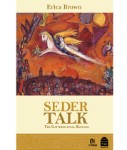Hungarian Jewish Architects by Tibor Gottdank

Hungarian title: Magyar zsidó építőművészek öröksége
The Austro-Hungarian Compromise of 1867 is the beginning of the Hungarian golden age. At that time, mostly new immigrants and the members of young generation are living in the capital.
The citizenry with German root is the depository of the expertise, primarily in the organization, the administration and the technical development. The greatest Hungarian architects and builders have German ancestors in that age. Miklós Ybl, Mihály Pollack, Imre Steindl, Frigyes Schulek, Alajos Hauszmann and Frigyes Feszl are also key actors of 19th-century Hungarian architecture.
Their majority is distinguished master teacher, in whose workshop young talents are starting to plan. Many of them are Jewish. Diligent disciples who will soon be liberated and the most talented ones, exploiting the opportunities offered by the Emancipation Act, will become an active part of the new structure of Hungary. It is no exaggeration to say that the turn of the century Budapest is being built by the German masters and the Jewish disciples.
The life of Hungarian Jewish architects – as it is all over the country – goes well before the First World War. In the architecture, this period is a fascinating mixture of classical, baroque, renaissance, art nouveau, art deco, and premodern forms and moods. The rich Hungarian citizenship, with a Jewish entrepreneurial layer that supports the progressive culture, can still make money for demanding houses, mansions, or villas. Banks and insurance companies have built up modern buildings. New public buildings and offices are being set up. There is more money to educate, cure, entertain, and sport.
The capital becomes a major European metropolis as London, Paris or Vienna. Architects, including Jewish architects, are full of work, planning houses in different styles, experimenting with new shapes and materials. They will also be well-offs, with palaces, villas, and follow international mainstreams.
Jewish architects plan in the capital Gresham Palace, Hotel Gellért, Hotel Astoria, Hotel Palace, and the Ritz-Carlton. Their houses are full of Grand Boulevard, Népszínház street in Józsefváros, Falk Miksa street and Alkotmány street in Lipótváros, Nagymező street and Bajza street in Terézváros, as well as Wesselényi street and Dob street in Erzsébetváros. They also plan the most beautiful parts of the former Jewish quarter in Pest.
And they create a modern atmosphere in Újlipótváros, in Margit Boulevard and Pasarét, art nouveau in Józsefváros, Terézváros, in Szent István Boulevard and Szabadság Square. They build offices, department stores, schools, hospitals, baths, swimming pools, sport stadiums, theaters, and cinemas.
Beyond the capital, they form the face of major Transylvanian cities, as well as the city of Debrecen, Dunaújváros, Kaposvár, Kecskemét, Komárom, Nagykőrös, Nyírbátor, Nyíregyháza, Novi Sad, Palicsfürdő, Pöstyén, Szabadka and Szeged.
Abroad – escaping from the bad atmosphere caused by “Jewish laws” – they are important members of the modernist movements and become renowned and esteemed designers of Amsterdam, Berlin, Chicago, Haifa, London, Los Angeles, New York, Paris, Stockholm, and Tel Aviv.
Year first published: 2018
The book's page at the publisher's site















Where can I purchase this book??
If you are not in Hungary I recommend asking Tibor Gottdank, the author, on his facebook page or via email